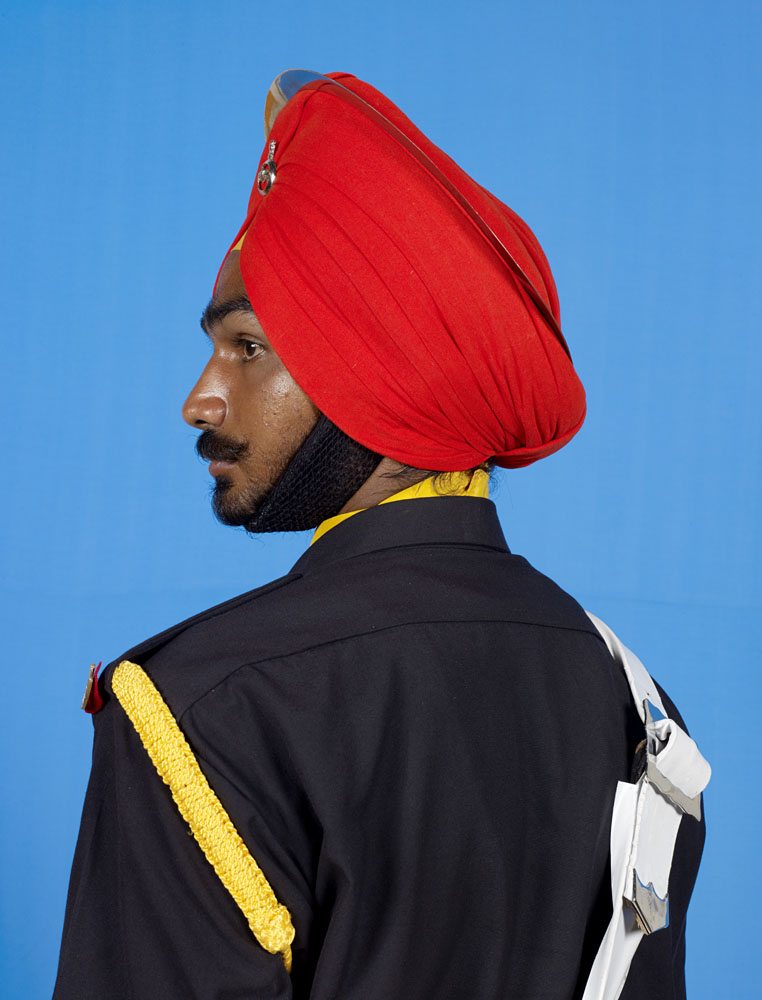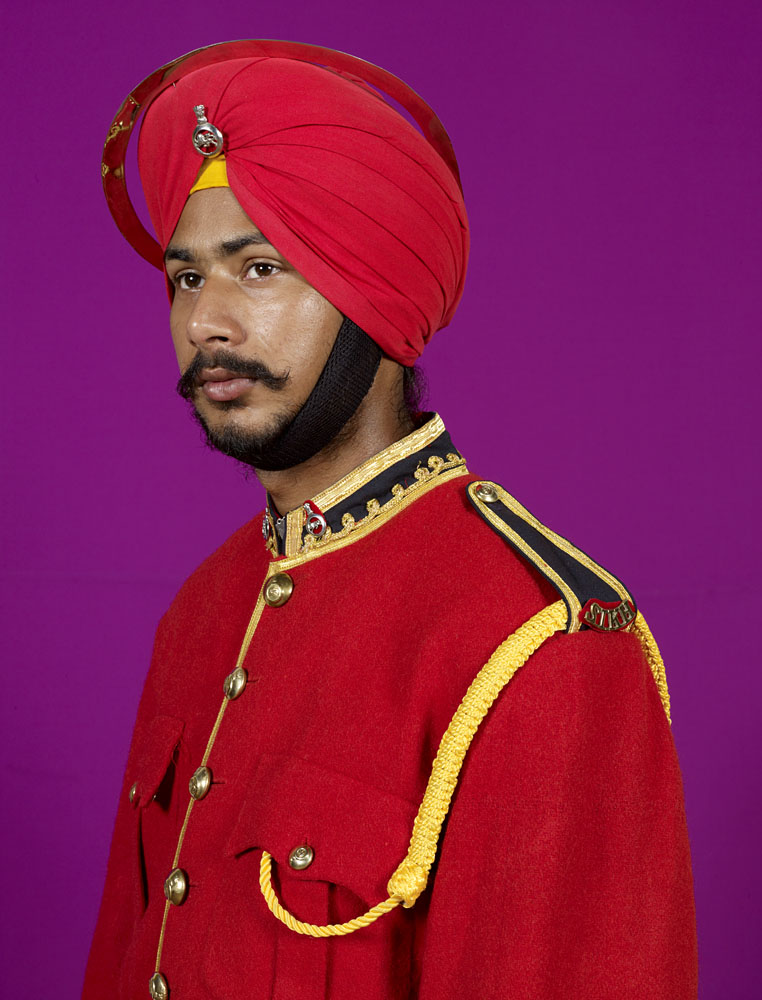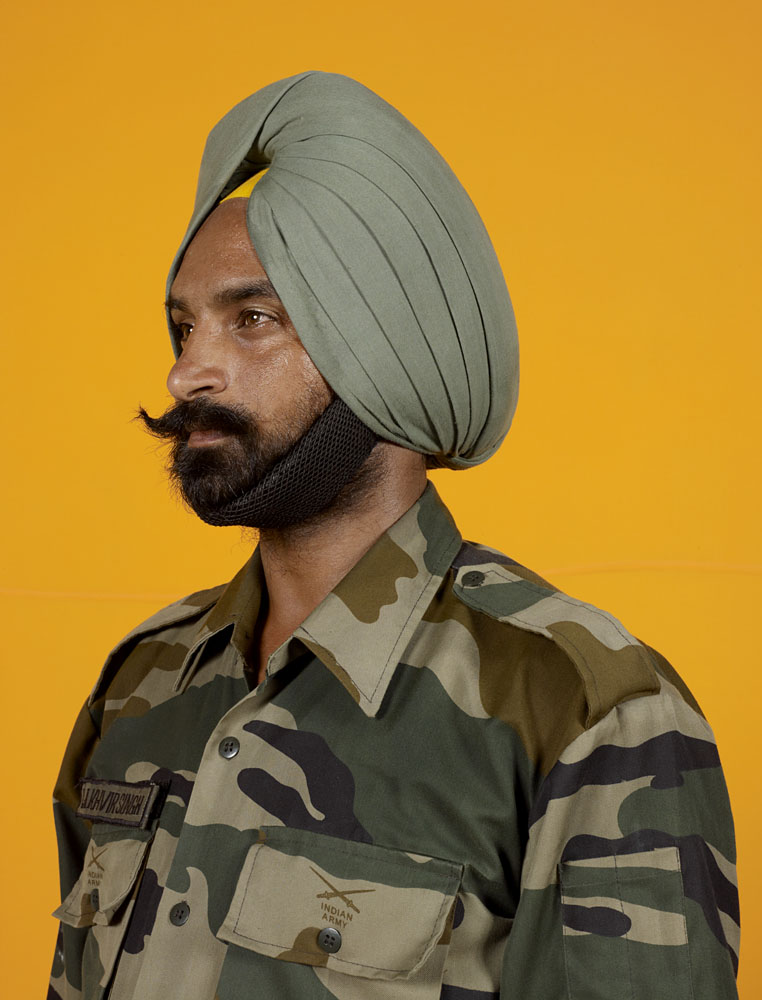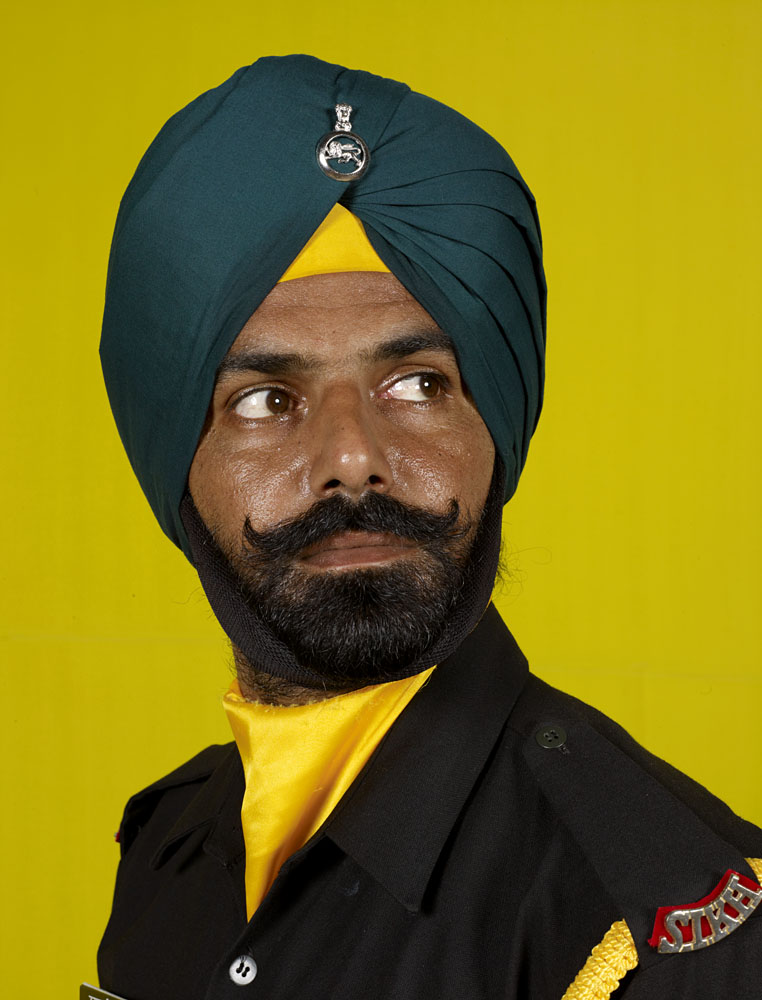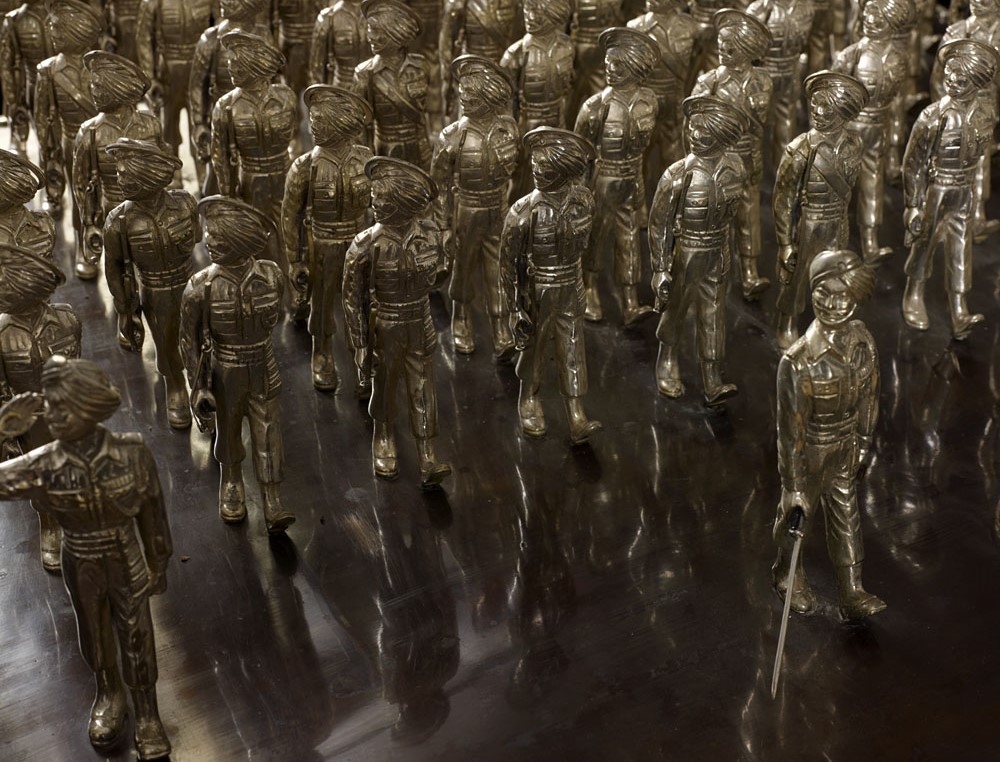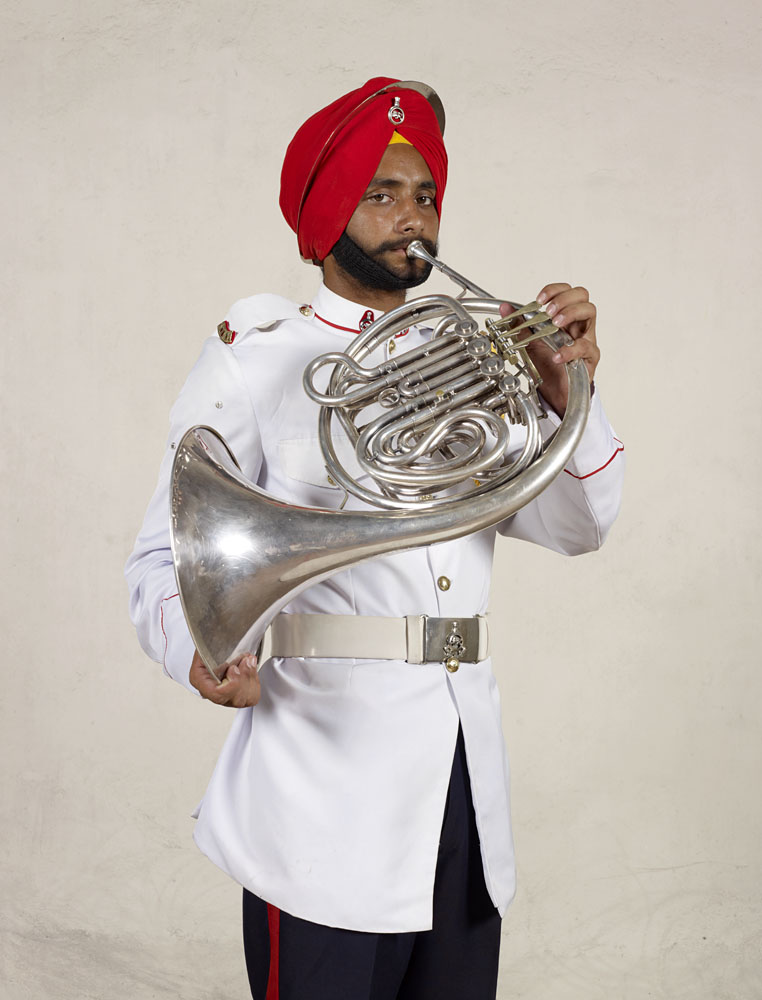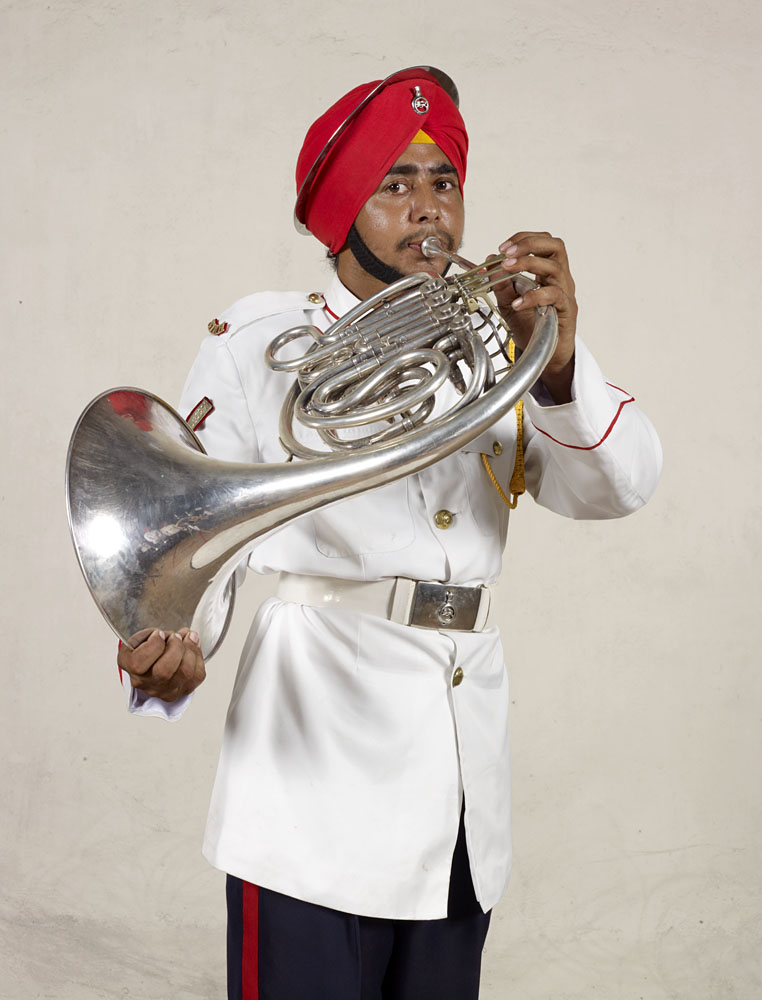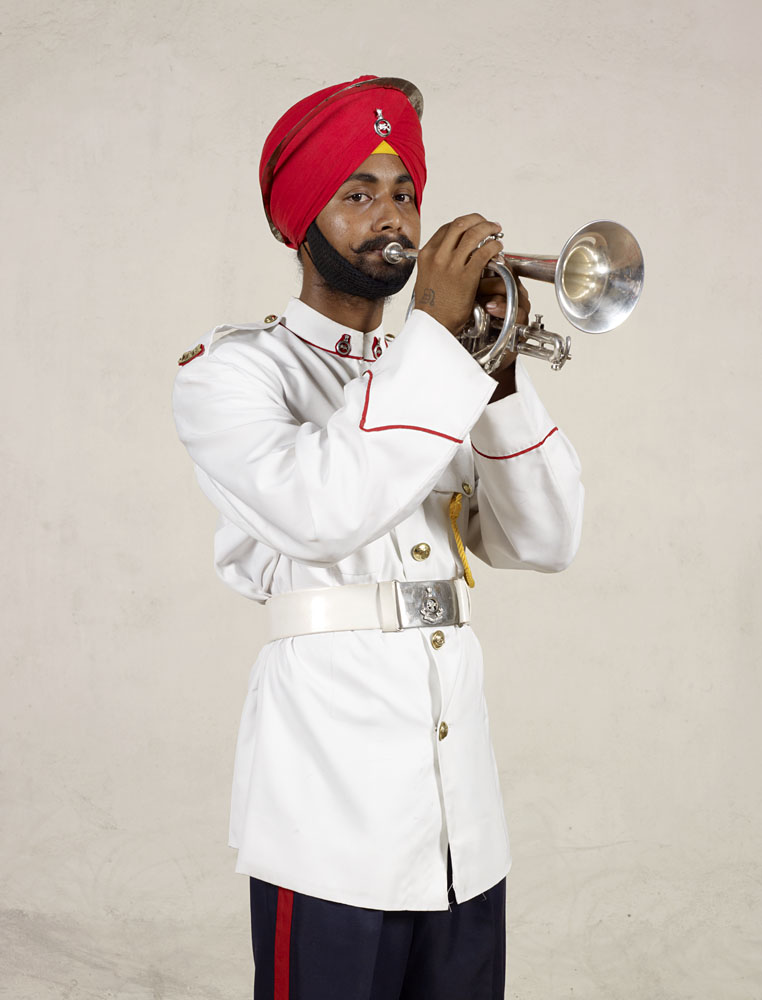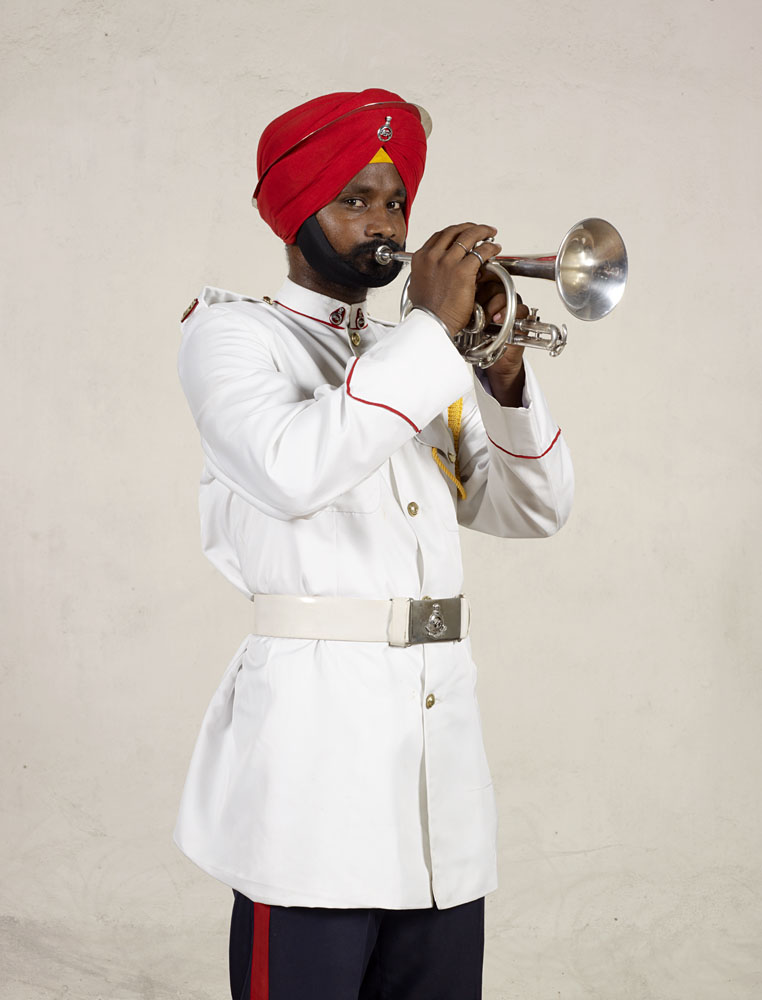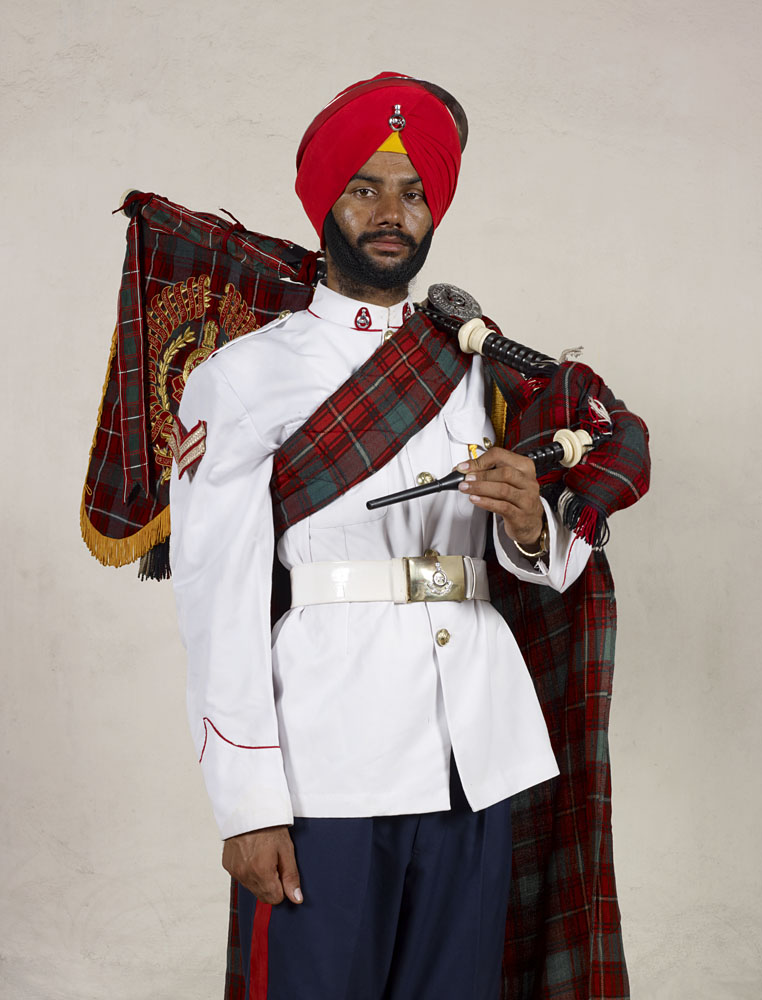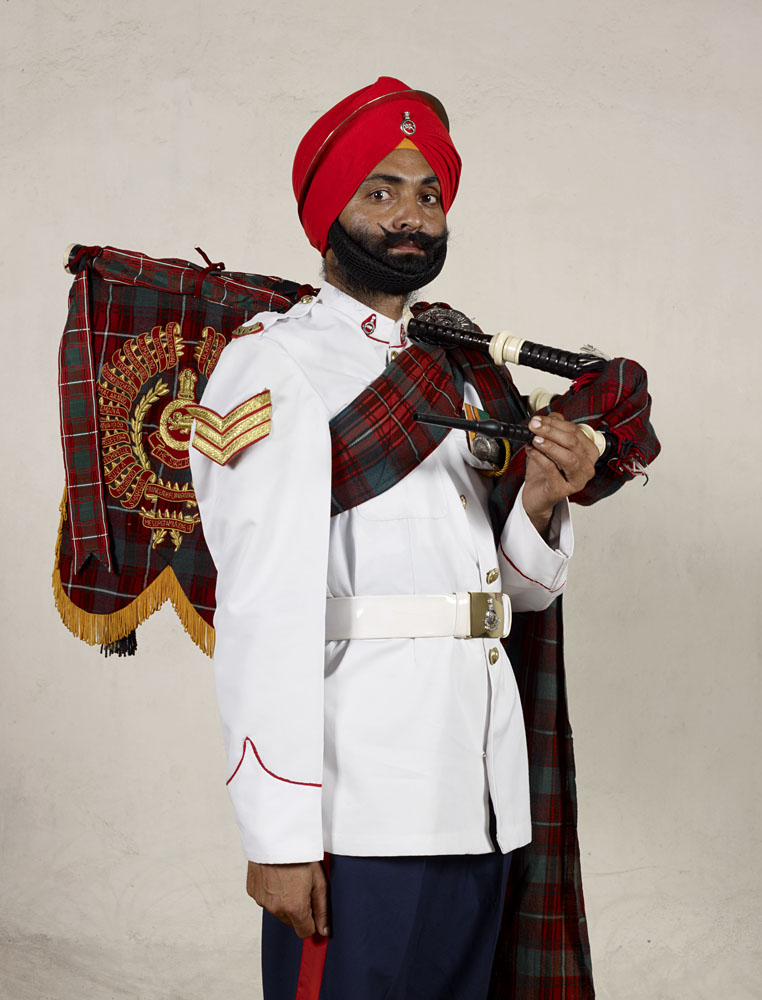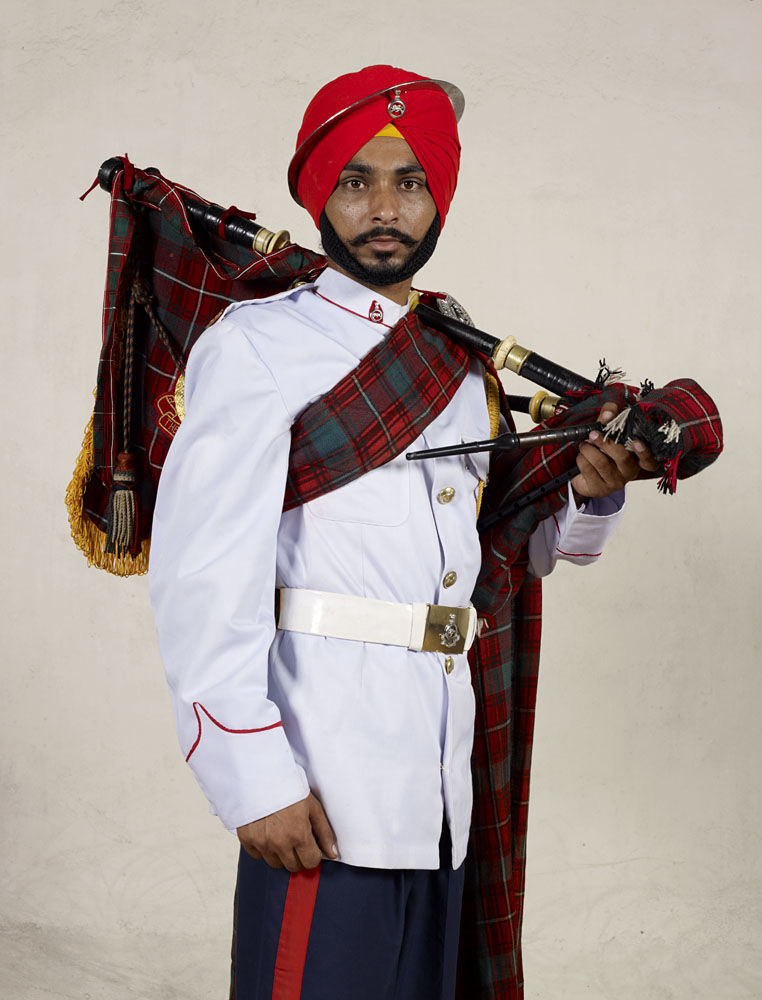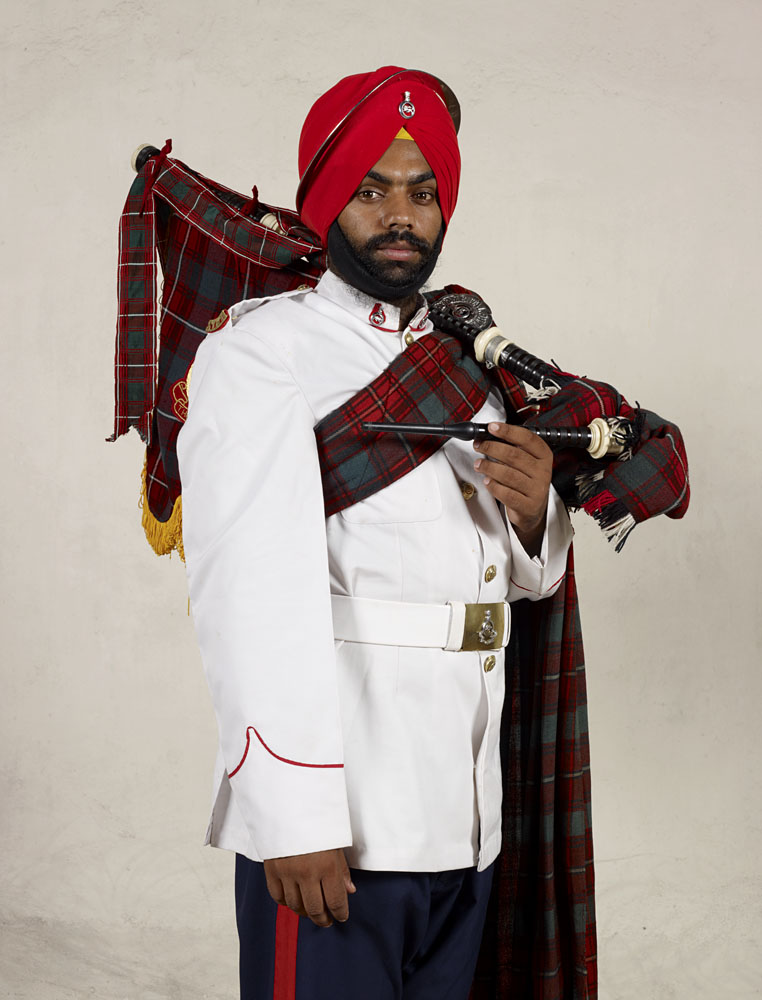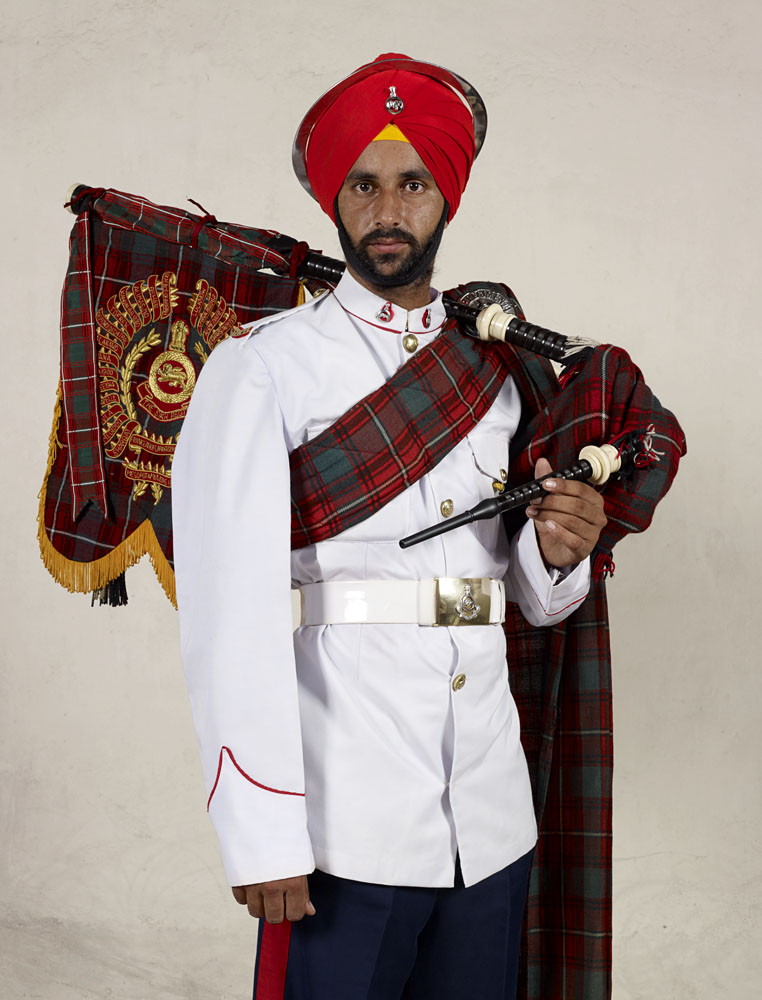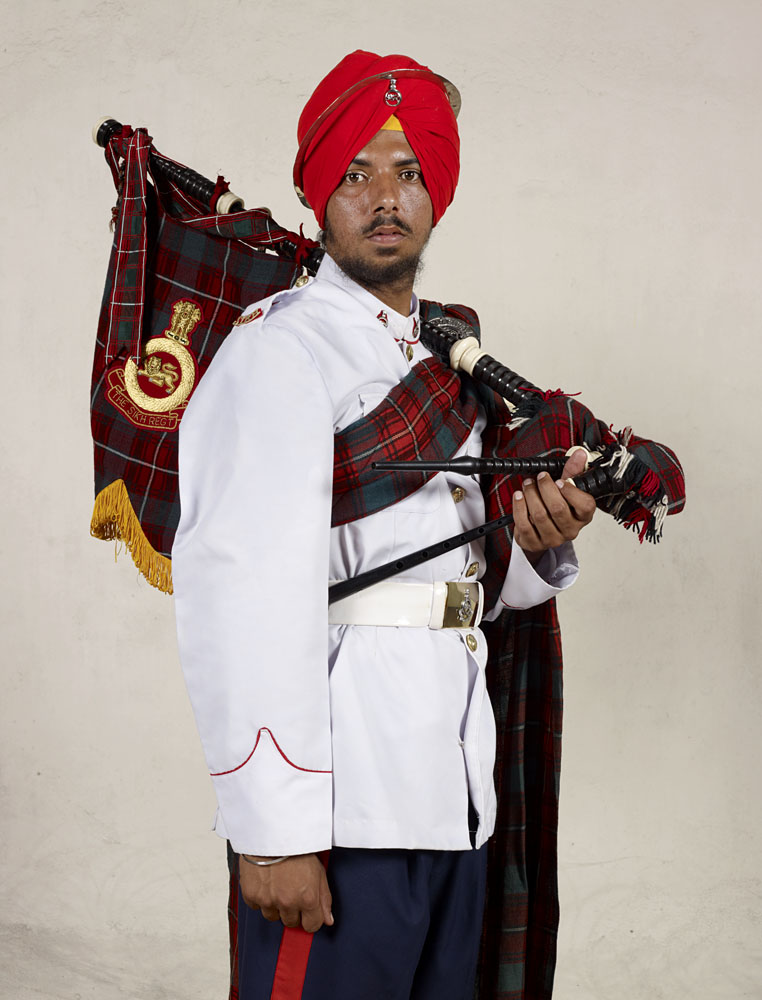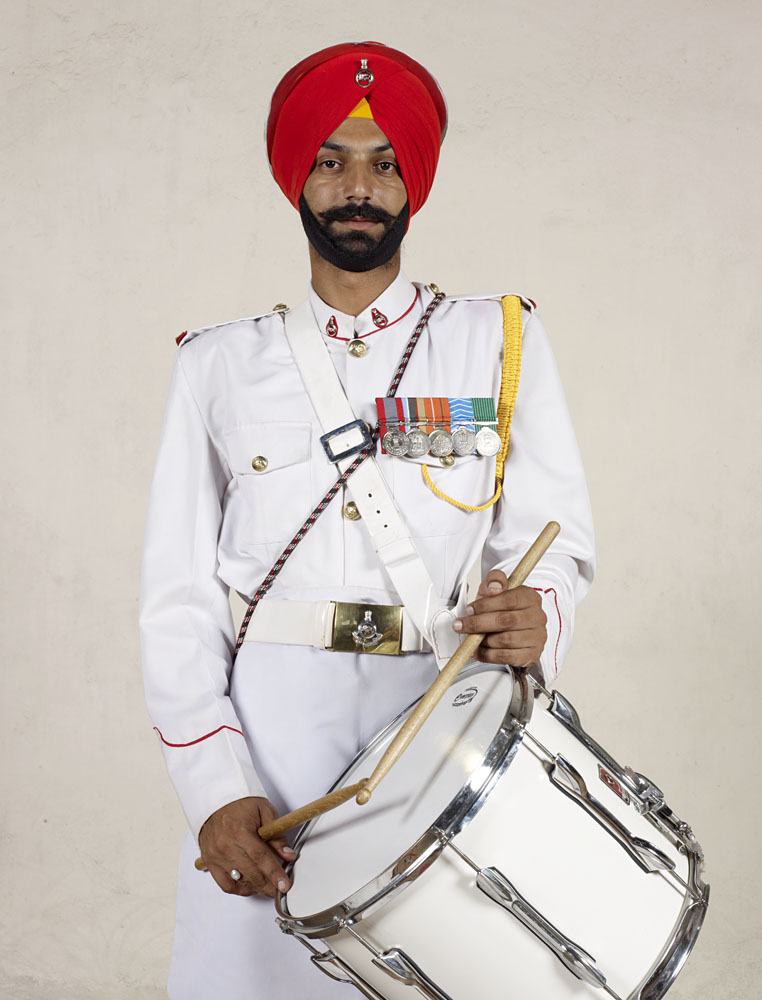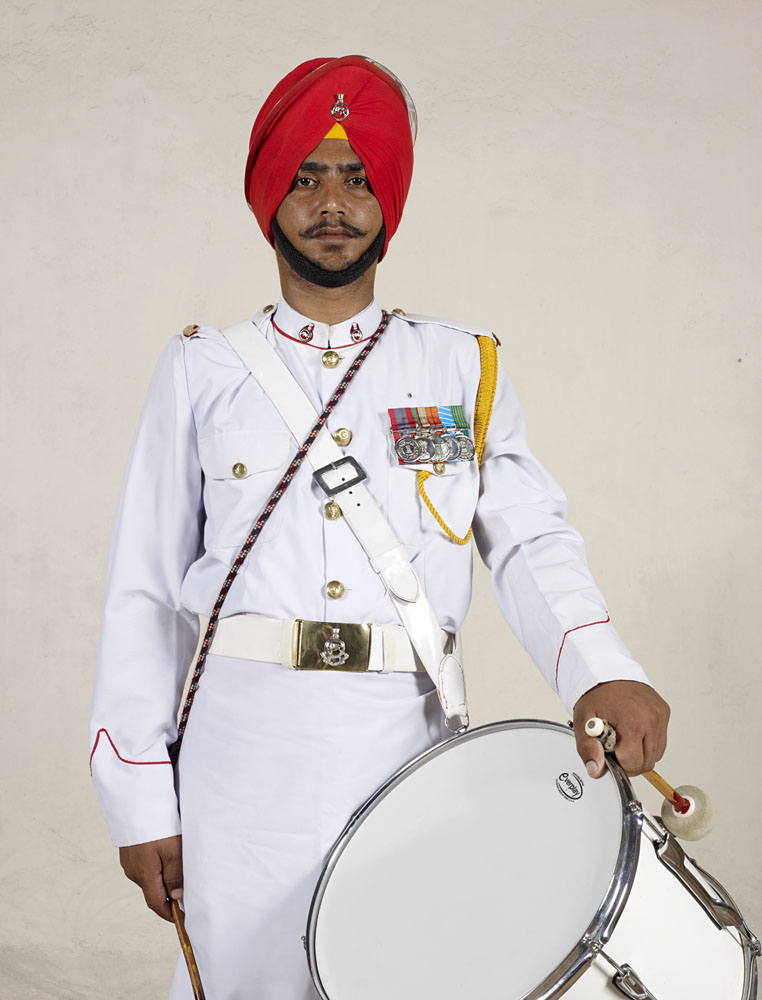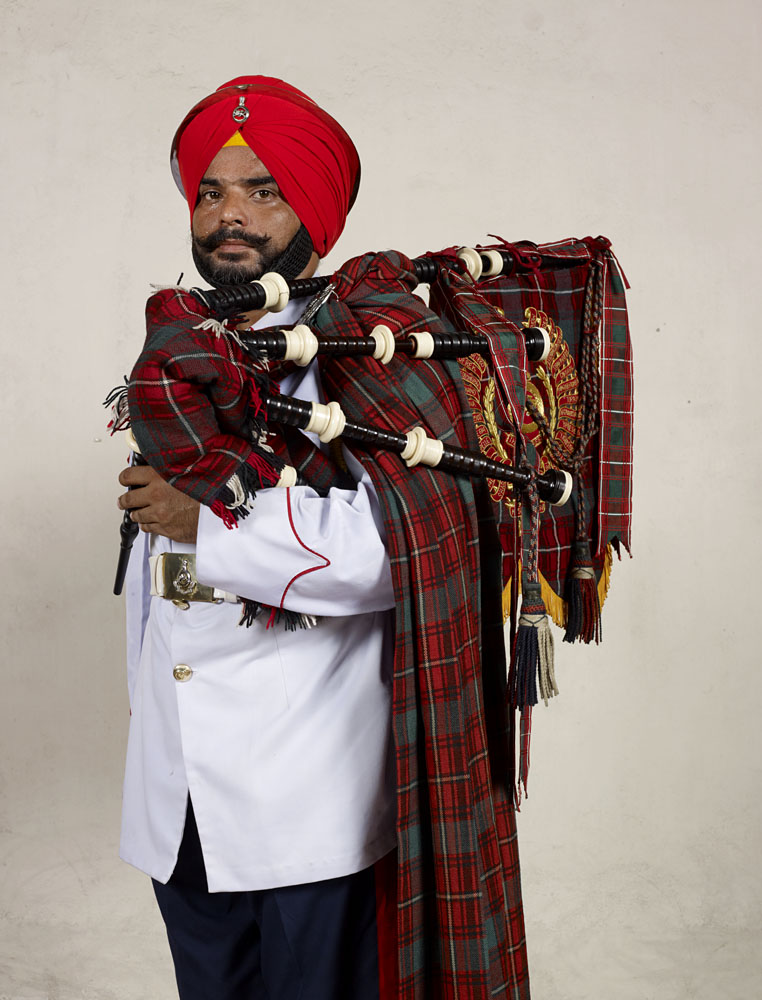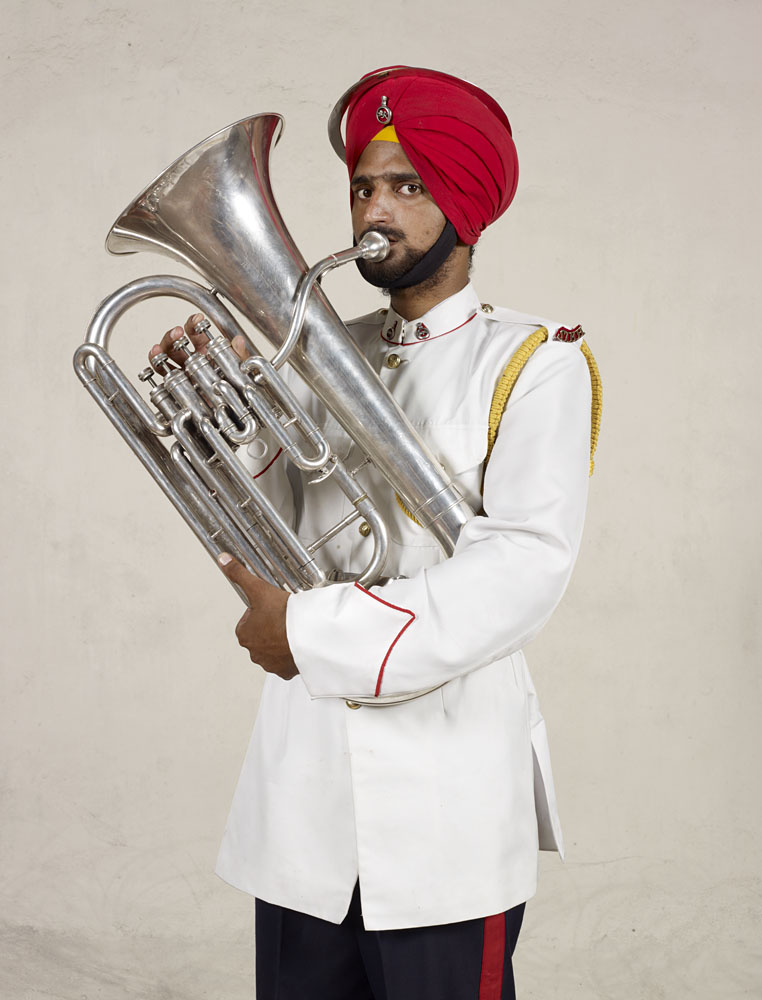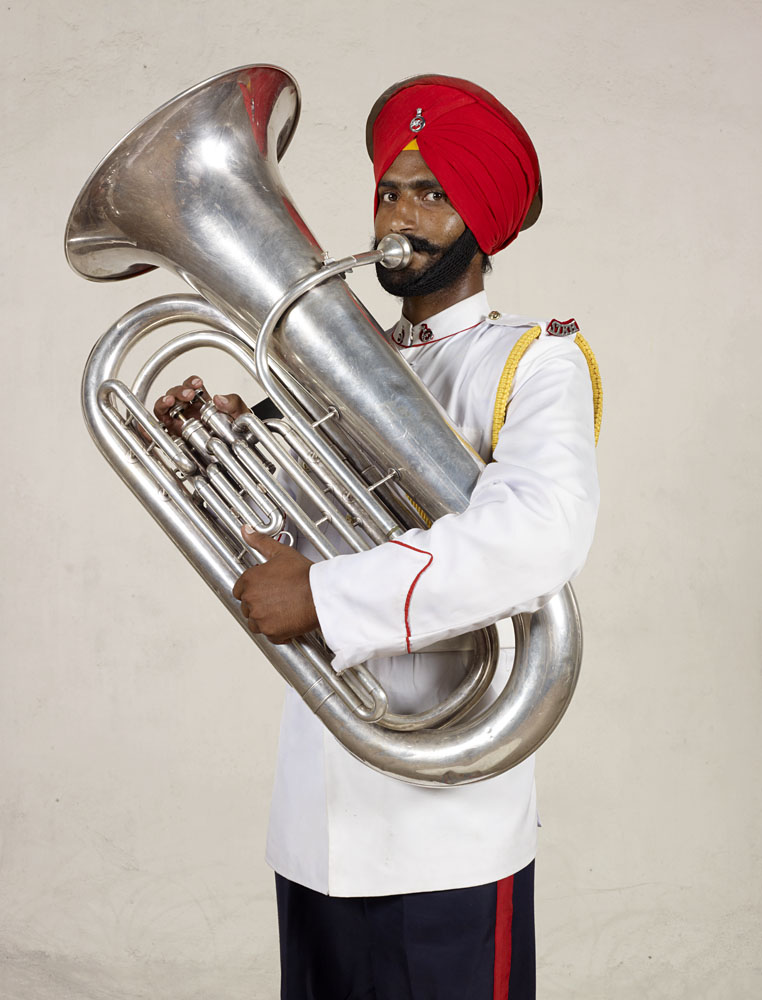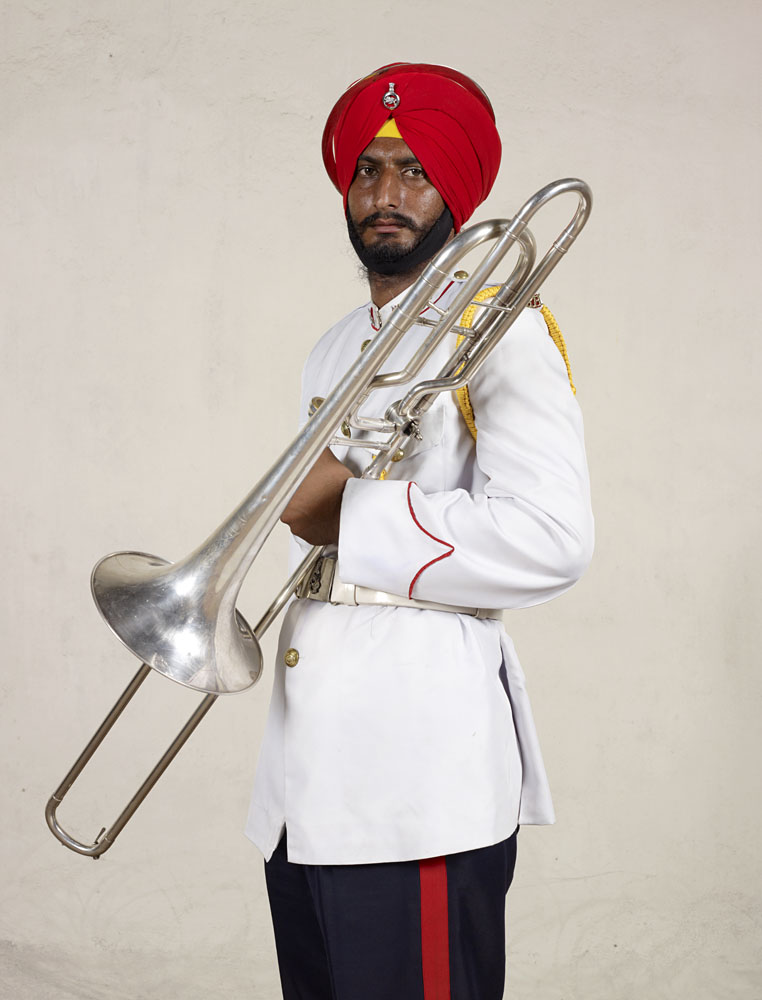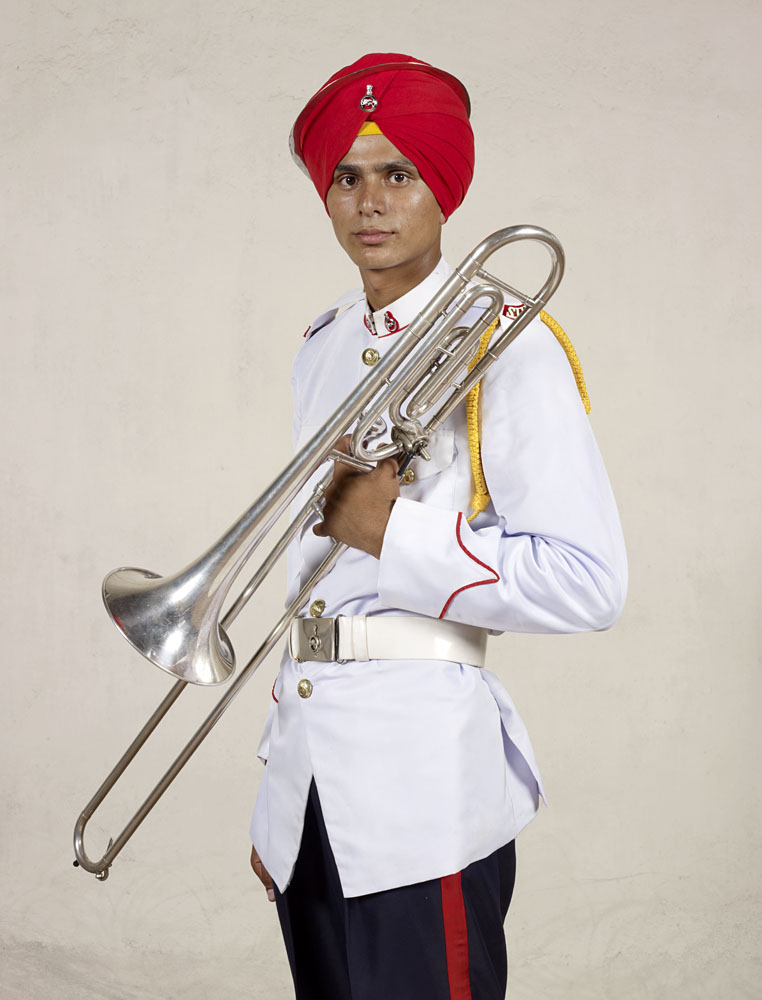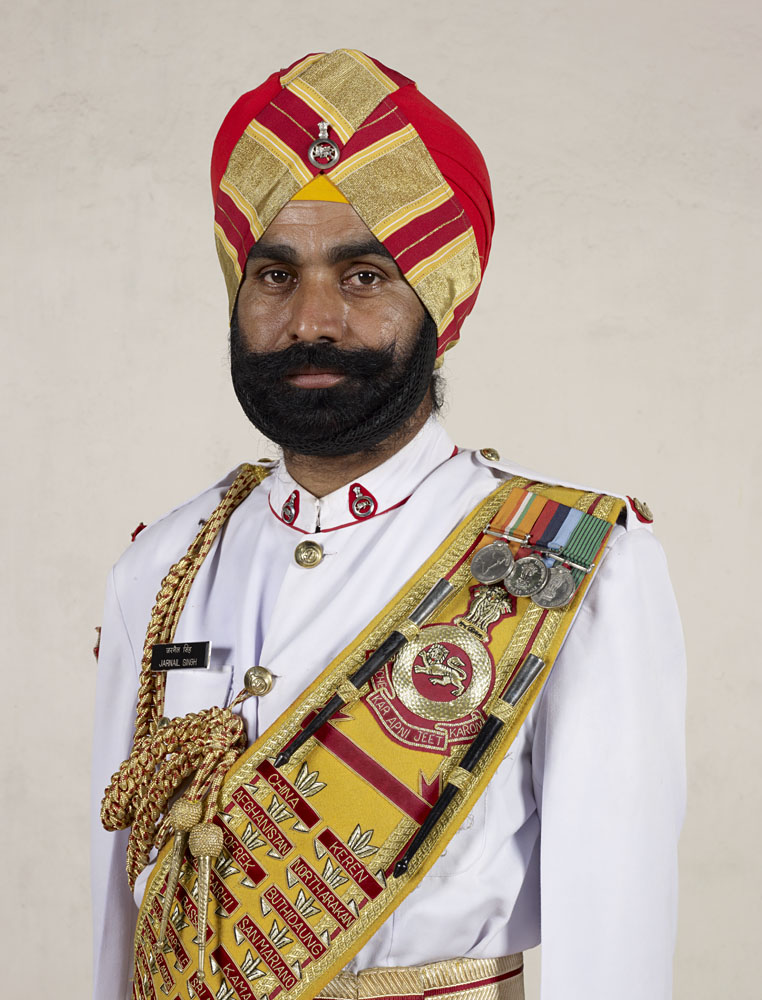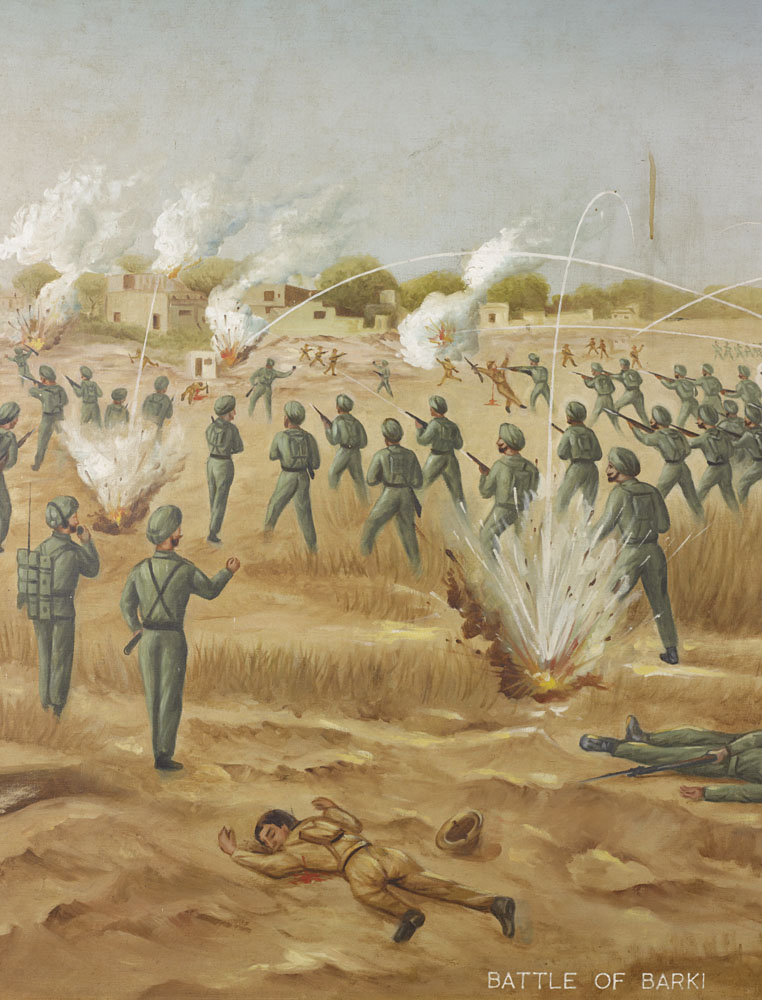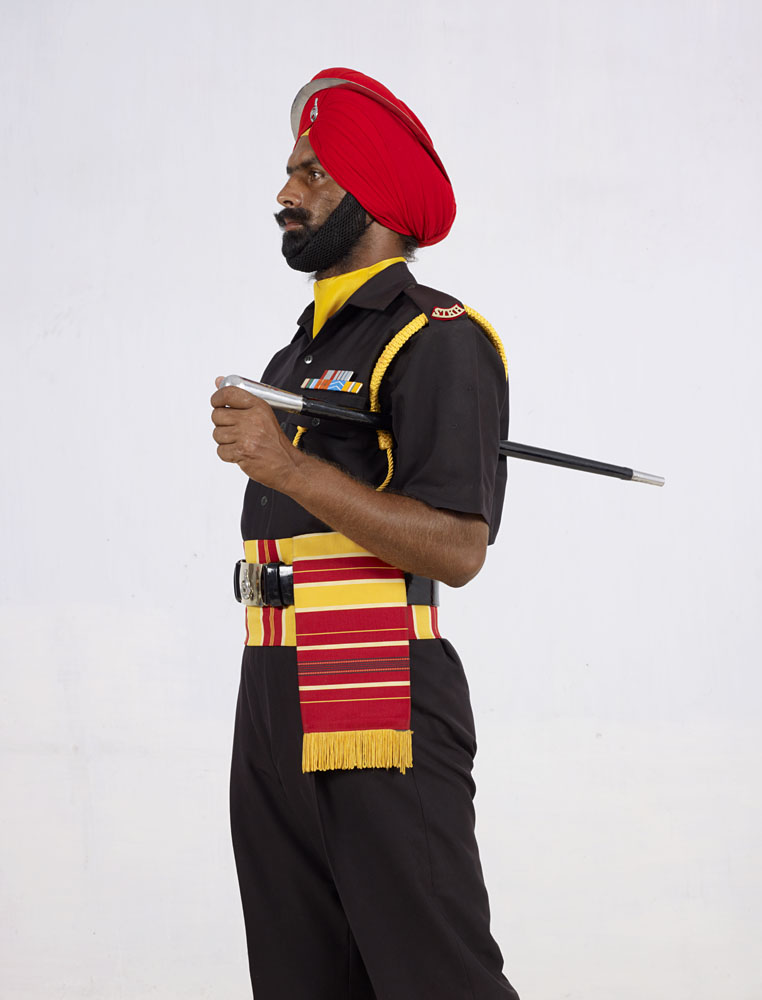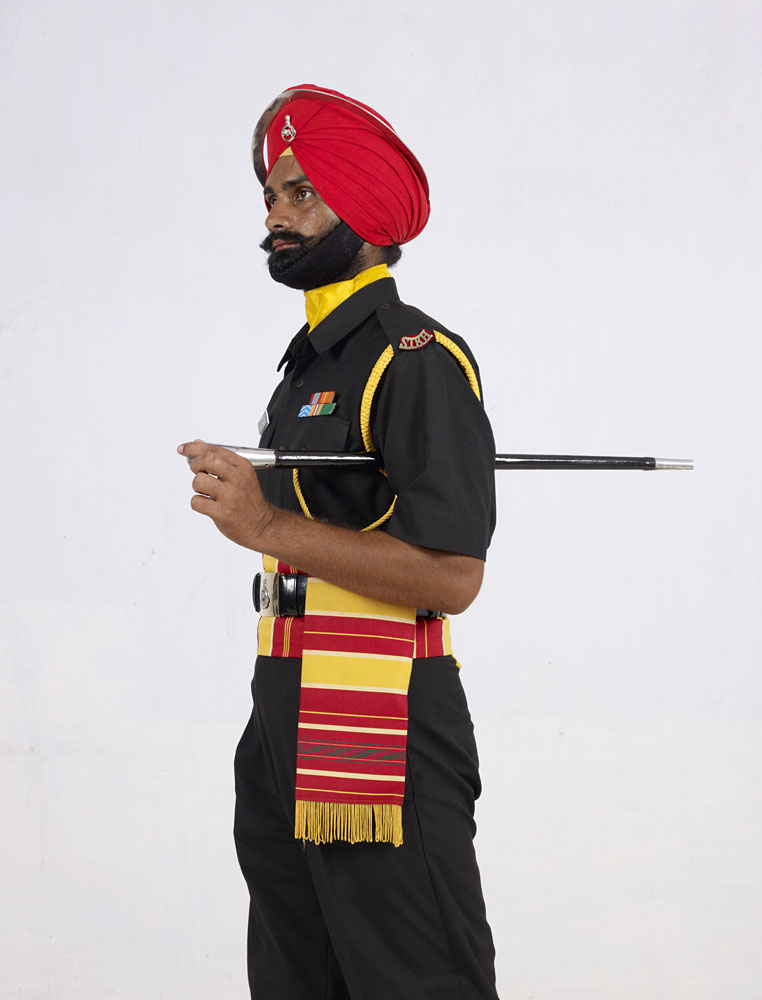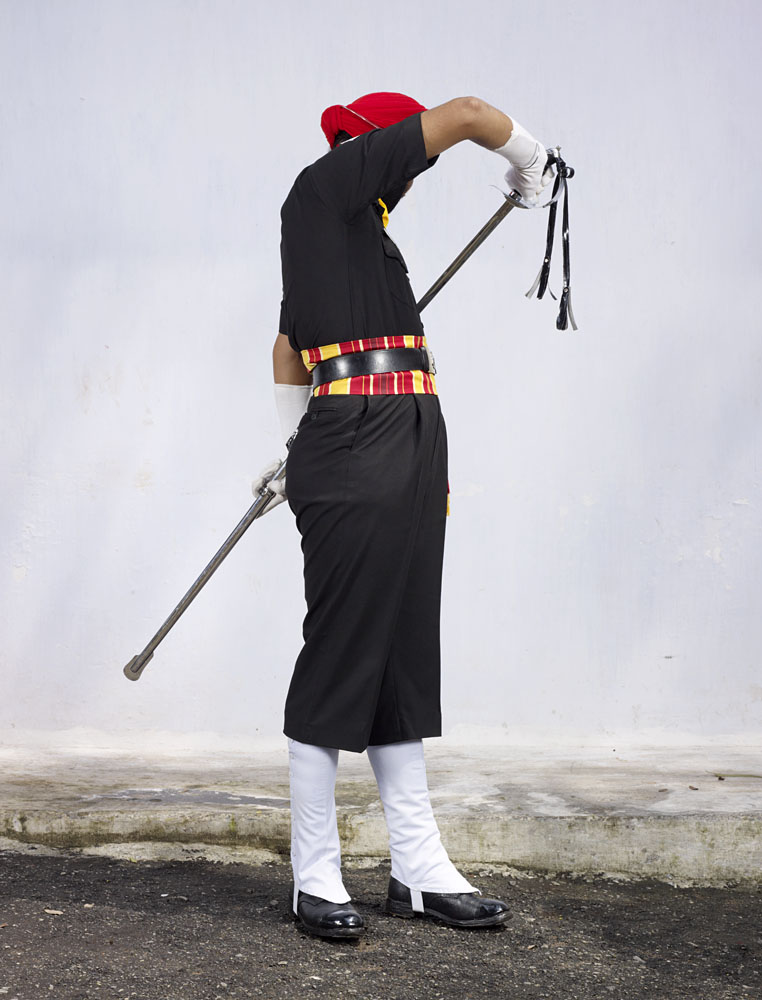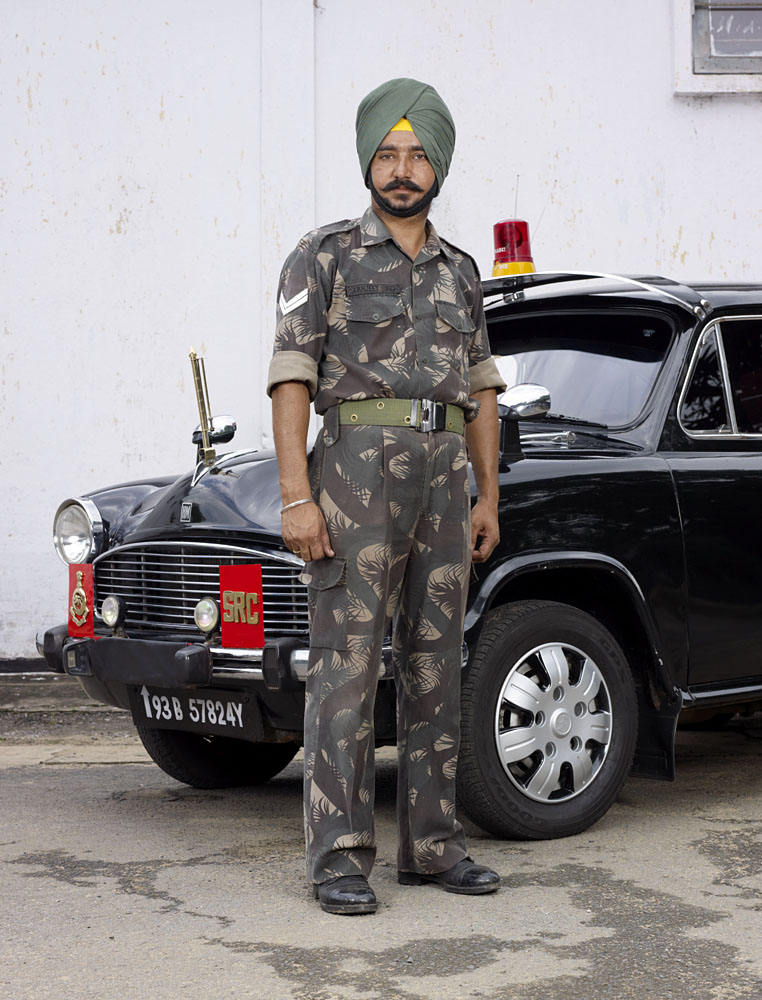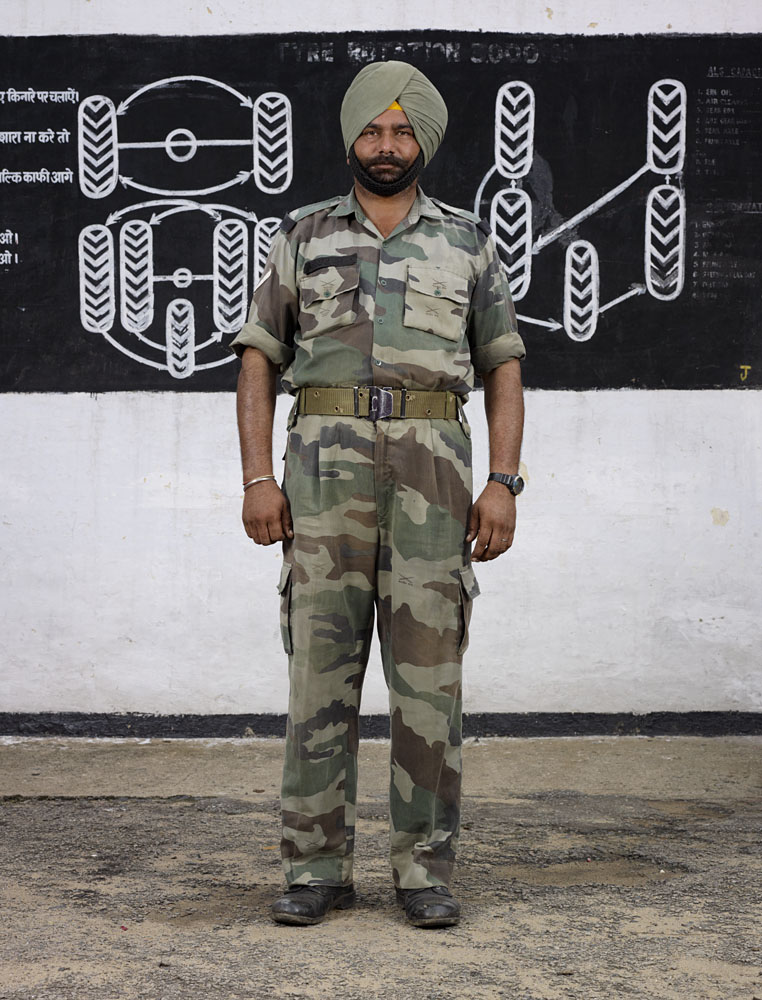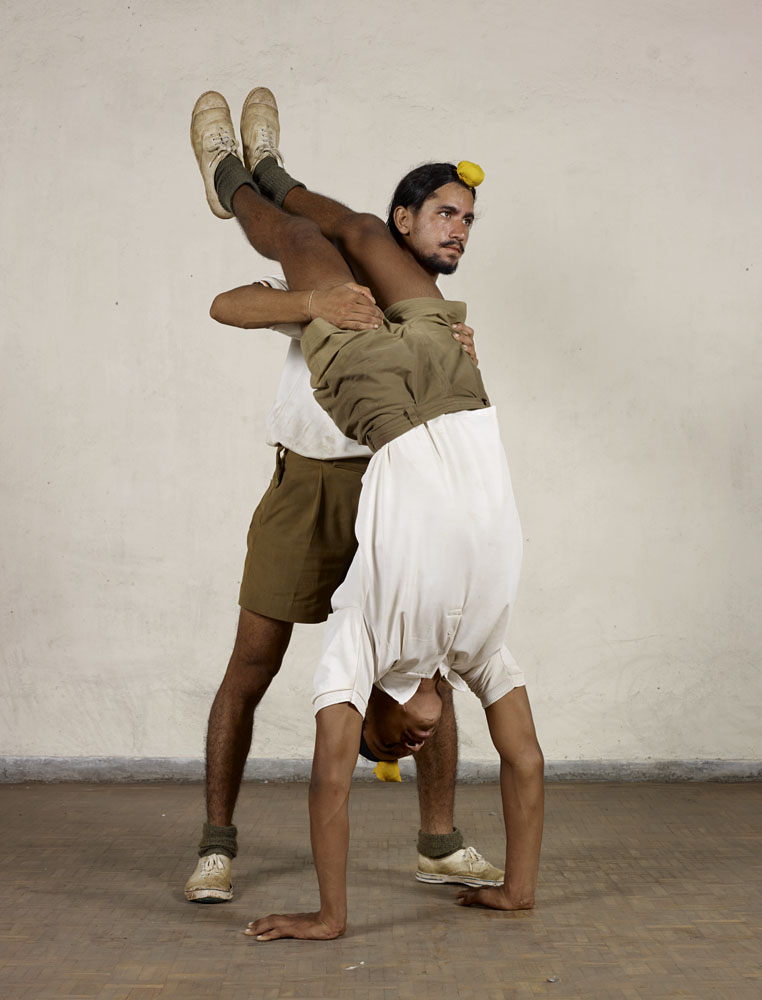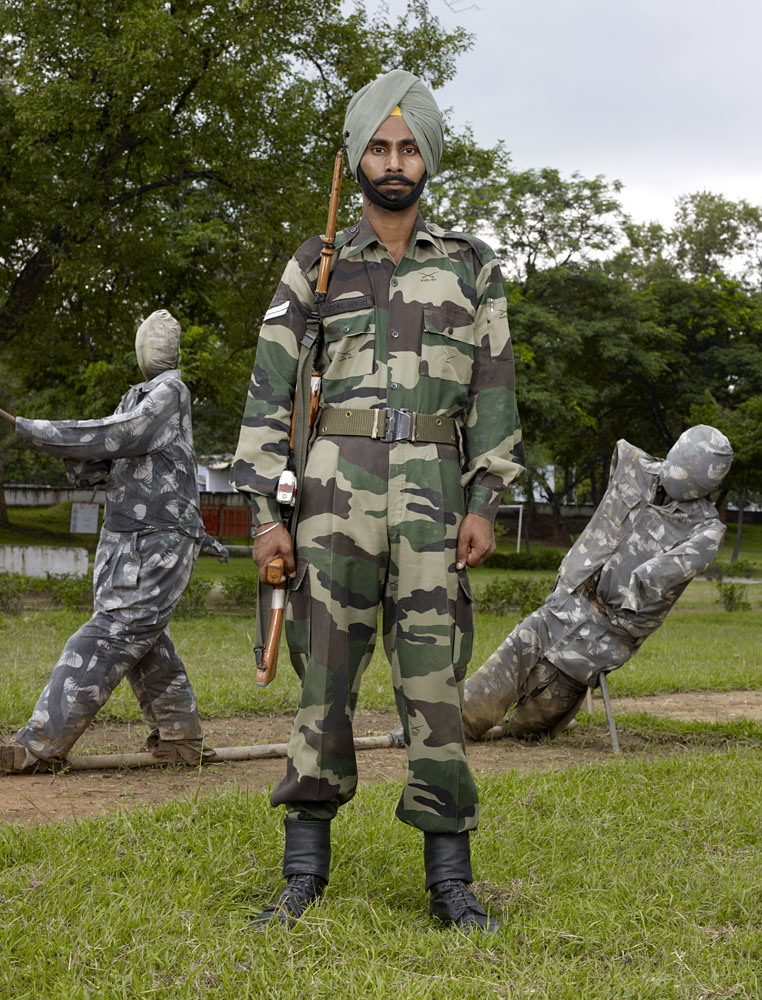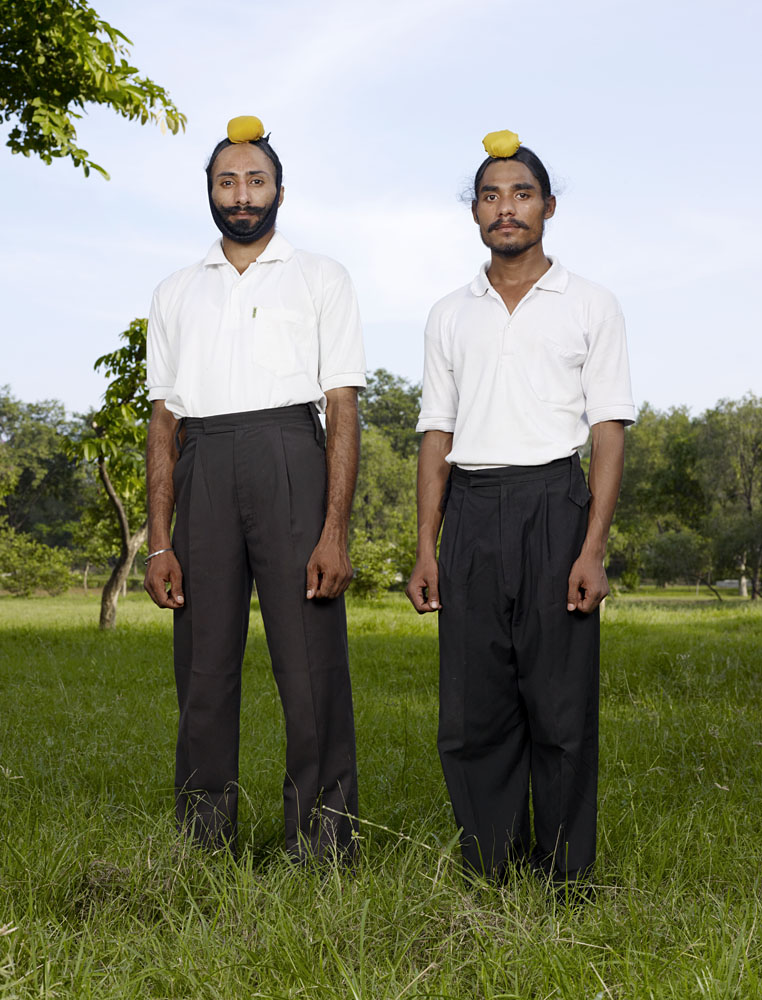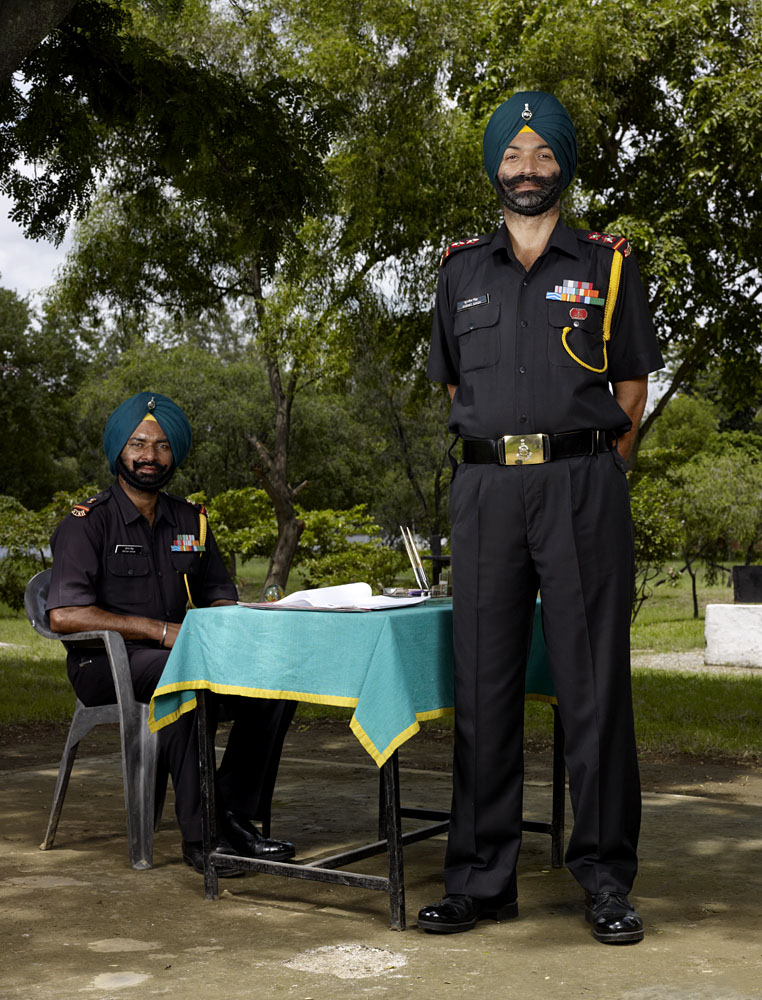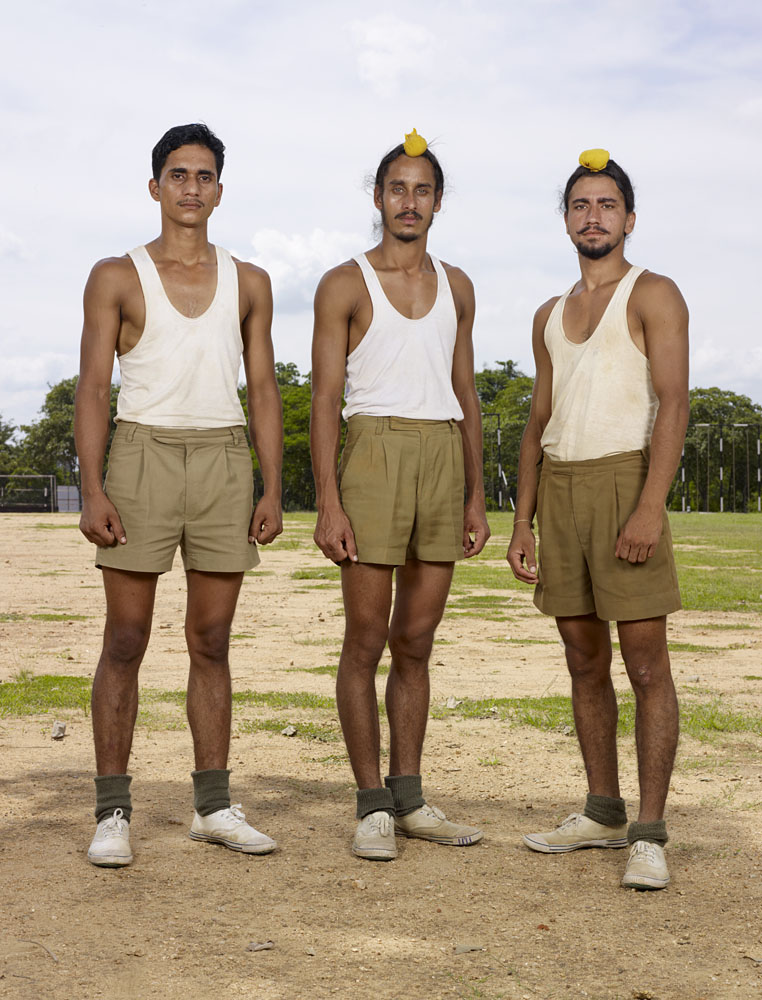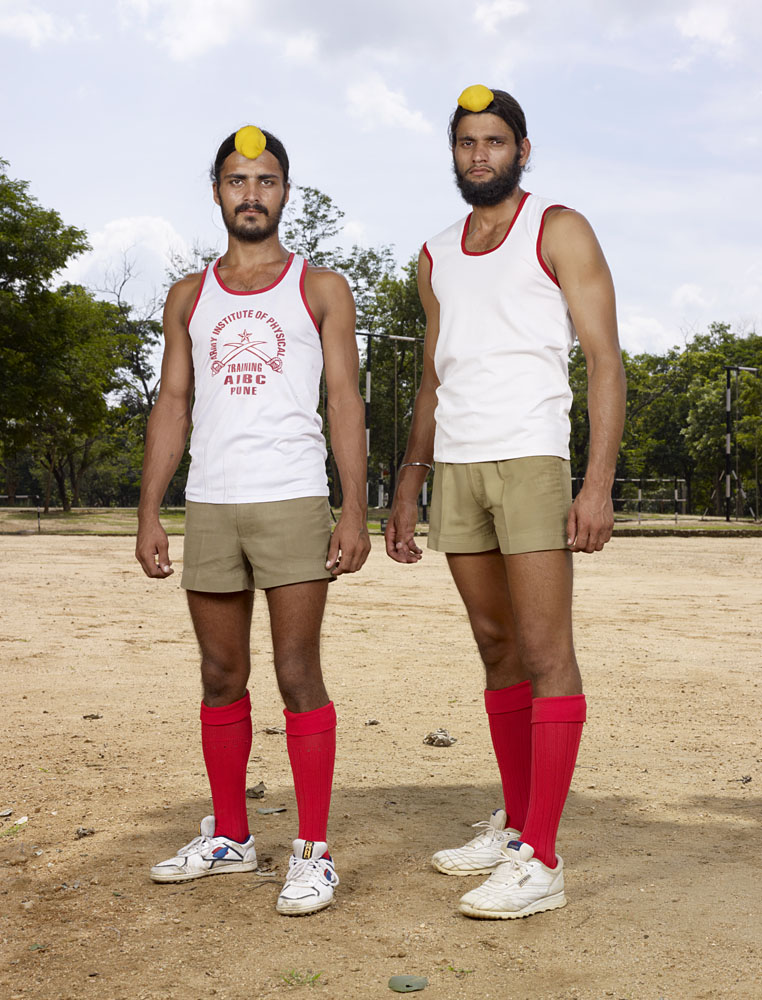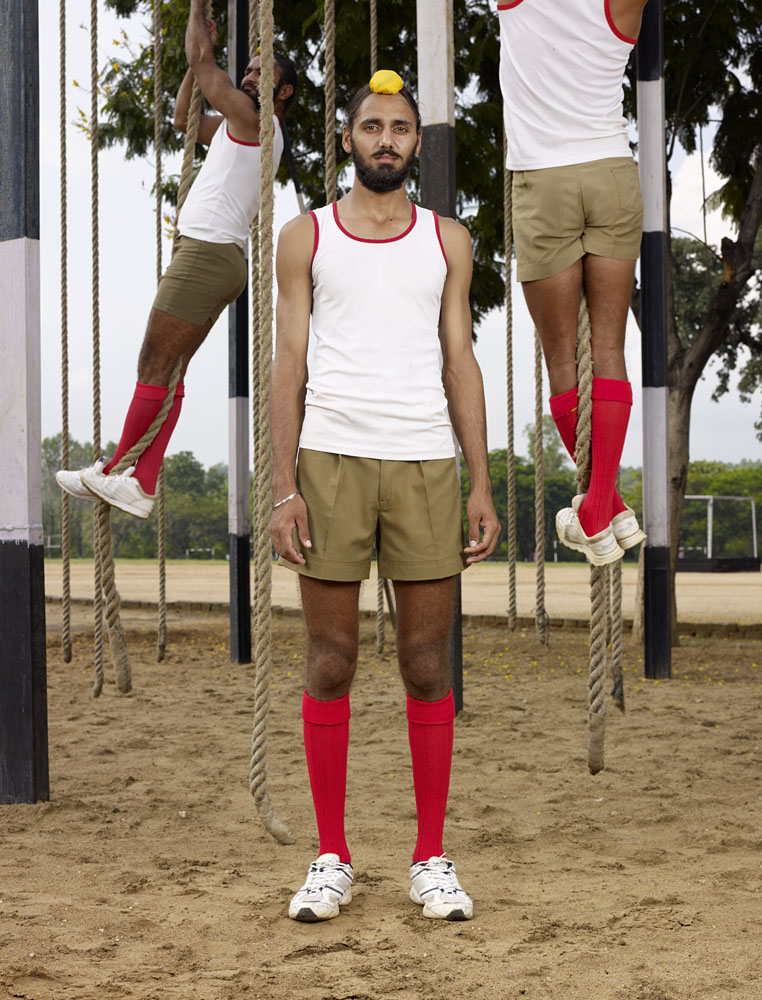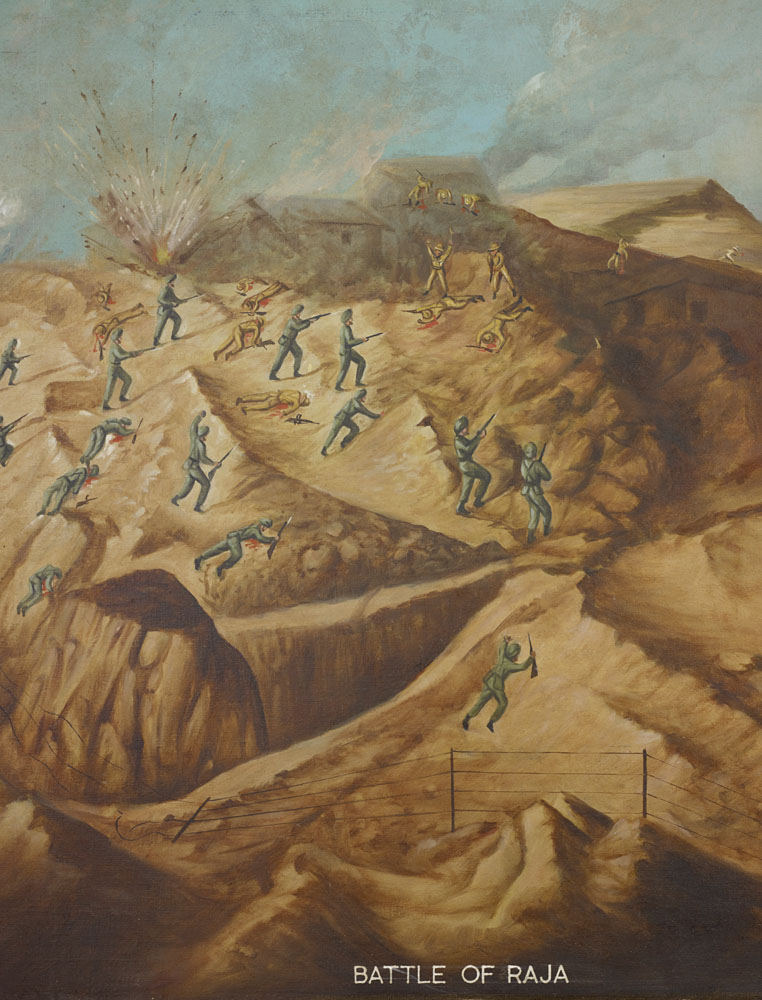After two years of negotiations with the Indian Ministry of Defense, Charles Fréger obtained permission to photograph the famous Sikh regiment in the state of Jarkhand.
Following the Hereros and Short School Haka series, it is the balance of power and the occurrence of a cohabitation between ancestral indigenous tradition and colonial tradition that the photographer notes in the regiment, as manifested in the uniforms.
The clothing is a territory where the turban, the beard, the Sikh moustache with the tartan, the bagpipes and the gaiters telescope and coexist. Full-length, bust and close-up portraits alternate, interior and exterior. The registers are mixed, full-length photographs showing soldiers in training situations follow interior views of men in parade uniforms, trombone, bagpipes and trumpet in hand. Then four portraits emerge, framed at the bust, on a brightly colored background, blue, purple, orange, green, like pop icons. The color bounces in multiple points on the image, the turban, the braids, the scarf and the jacket. And then there is the perfectly smoothed and rolled up moustache, and the proud look that both complete the dandy look willingly borrowed by the soldier.
As he did for Merisotakoulu, a series dedicated to the Finnish navy, or Orange Order, dedicated to the Orangemen of Northern Ireland, Charles Fréger stages another important protagonist of this armed corps: the mythology of the regiment. The portraits are combined with painted representations of wartime events and battles won.
